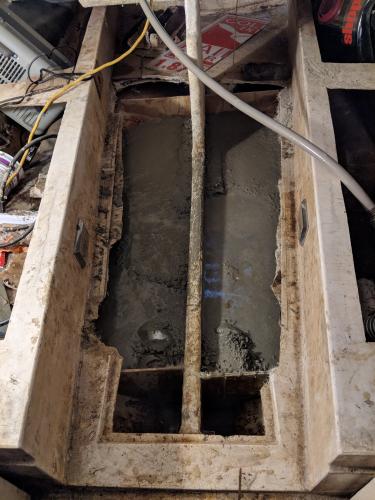Center board pivot
|
|
This post was updated on .
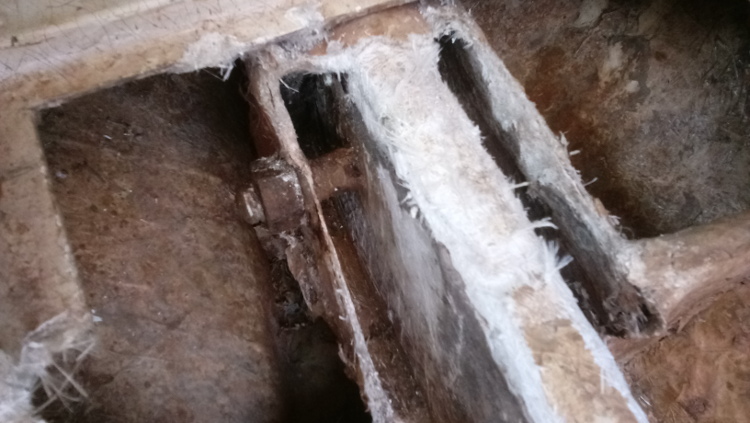 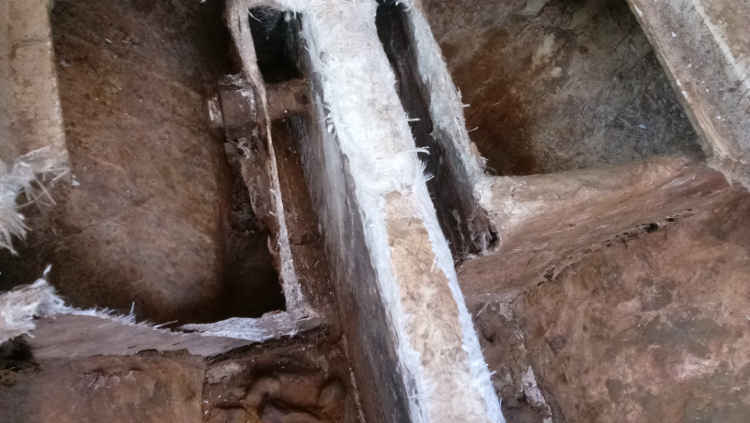 After cleaning out all of the rotted wood and the fiber glass patch, I found the pivot pin to be poorly supported and there is no seal to keep the sea out. |
|
|
Hi Tim, Later boats have ballast fully sealed in GRP and set a little further astern than the cabin hatch. The pivot bolt is supported by two steel plates held against thinner ply boards as seen here on my own Just 17: 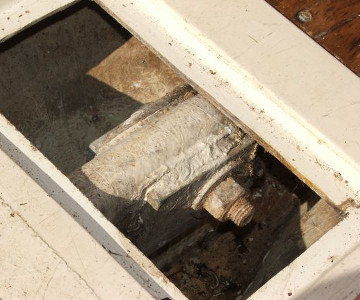
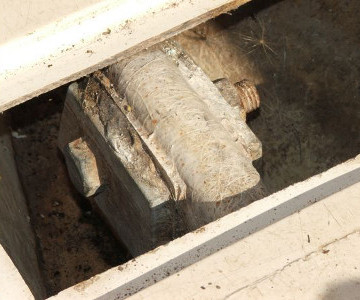 The best picture I have of an earlier boat like yours, those with sail numbers less than around #150, appears in an item about Jammed Keels: 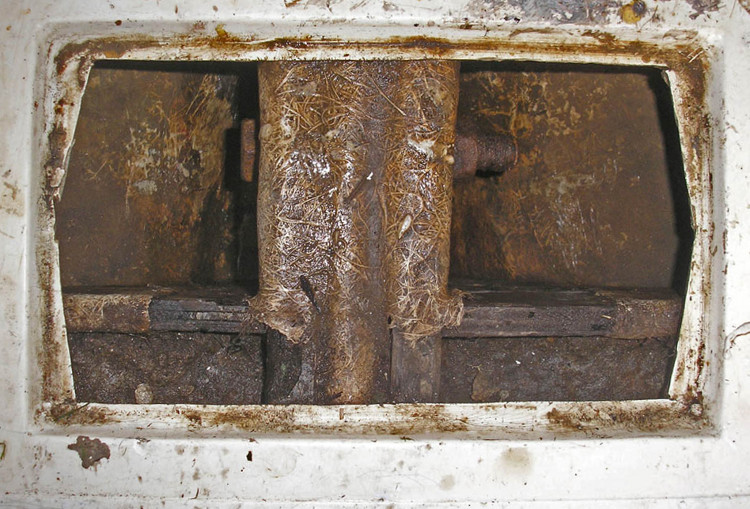
This seems to suggest that rather than the metal plates seen on later boats the earlier boats relied on wood baffles that would fill either side of the keel, the space seen in your photographs.
Greg Chapman
GregAfloat - My Boating Biography |
|
|
I agree with Greg. It certainly looks like early boats had wooden pads encased in grp instead of the simple steel plates like my later boat. It may be that the keel box in early boats were thinner lay-up, but not necessarily. I would replace your bolt with stainless, but they are a pig to remove especially if rusted into the keel! I managed to remove mine by cutting each side off with a thin blade angle grinder and then supported the boat on two 1 tonne bags of sand - one at each end. I then put a jack under the keel to take the weight off the keel and drove the remains of the bolt out with a club hammer and drift. Get the keel sandblasted and galvanised, then replace the bolt with stainless. I would replace the wood with a couple of teak pieces stuck in with plenty of Sikaflex to seal them, making the holes that the bolt goes through about 3mm larger than the bolt to allow the sealant to get into the gap. This is all well worth doing as a working keel makes a huge difference to the sailing performance of the boat!
|
|
|
In reply to this post by GregSeaHawk
I took out 300 lbs. of rotting loose steel parts and concrete. Replaced with a few steel parts held together in concrete for a total of about the same 300 lbs.
The picture is of the cleaned out area with a space boxed out around the pivot pin to place a small bilge pump. The 2nd picture is with the ballast poured in. |
|
|
In reply to this post by TQ
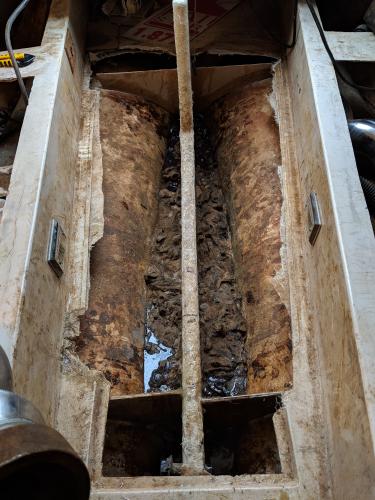 |
|
|
This post was updated on .
The new pivot is 3/4 inch stainless threaded rod with a couple of soft neoprene rubber washers sealing up against stainless steel plates that are polyeurethane glued to the trunk.
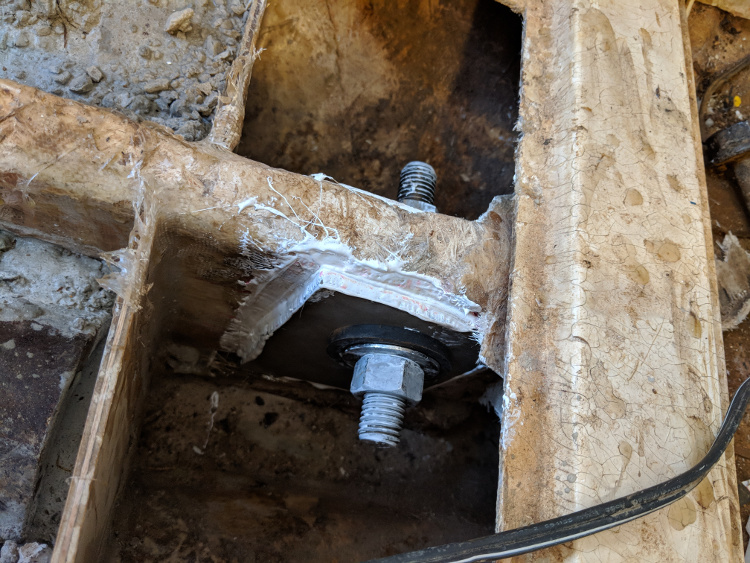
|
|
|
Hi Tim,
Hope you don't mind but I've edited your last post so the image can be included on the forum rather than just being downloadable as a link. (If anyone would like the full size 7.8Mb file, let me know. Click on my username to reach screen where you can email me.) If you have larger versions of the other two images, I'd love to have them for my files! (My email address is on the Contact page - You can't attach files when you use the username link!)
Greg Chapman
GregAfloat - My Boating Biography |
|
|
In reply to this post by TQ
Great job there Tim! It will all well worth the effort as I'm sure you will be pleased with how the boat sails with everything working. I sail mine on the sea and last year beat a friends 25 foot Sadler in an informal race! He was so impressed he asked to sail the SeaHawk himself and came back smiling.
|
«
Return to Help Desk
|
1 view|%1 views
| Free forum by Nabble | Edit this page |


